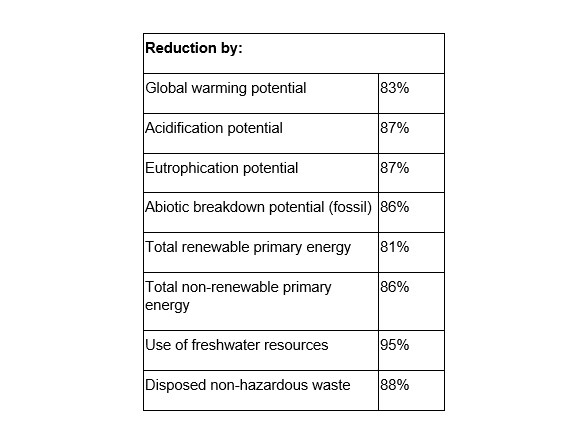The life cycle of lift doors
The environmental effects of goods can be determined with a life cycle analysis. This is of course also possible in the case of lift doors.
The life cycle of lift doors begins with the excavation of materials, such as iron ore, which is processed into steel. This is then transported to production locations, such as Meiller Aufzugtüren GmbH, where the lift doors are produced.
The goods are then installed in buildings, where the use phase begins. On average, this amounts to 25 years, but is dependent on the use location and external circumstances, such as vandalism. If a lift door can no longer be used, the materials are disposed of or recycled at the end of life.
Different environmental damage
 Table 2: Impacts MOD concept. Photo: © Meiller Aufzugtüren
Table 2: Impacts MOD concept. Photo: © Meiller AufzugtürenThese are the various phases the products can pass through during their life cycle. Different environmental damage arises at each of the individual stages. Life cycle analyses examine these and consider various impact categories. These and the environmental impacts can be seen in Table 1. Here one can see that above all the global warming potential, the primary energy requirement from renewable and non-renewable resources, fresh water resources and non-hazardous waste are resulting in high environmental damage.
Depending on the category, the emissions occur in different phases in the life cycle. Above all, the phase of material production and use has a considerable influence on the previously mentioned categories. On the one hand, this is due to steel manufacture, since this requires a lot of energy as well as water and waste also arises during excavation. The use phase is also dominated by energy consumption, since the lift doors are used for 25 years and the current energy mix includes fossil fuels.
Highest emissions along the supply chain
Reduction is possible through modernisation or repair of the lift doors, for example through the Meiller MOD concept. The existing products can continue to be used without the need for new resources. Table 2 shows the reduction in emissions, indicating the focus on goods that can be repaired should already be taken into account at the beginning of the life cycle.
The analysis makes clear that the highest emissions do not occur in the producing companies, but rather along the supply chain. This is why the companies should enter into a dialogue with the suppliers to achieve a reduction in emissions. Even if the environmental damage occurs in up- and downstream processes, the companies have a responsibility they need to observe.
More information: meiller-aufzugtueren.de


























Write a comment